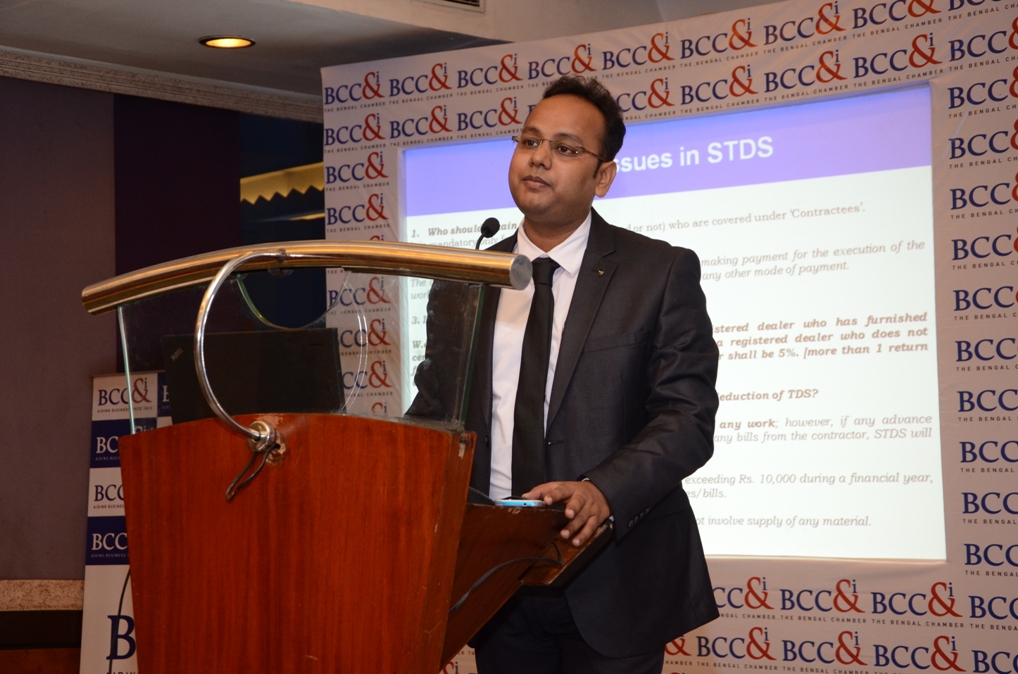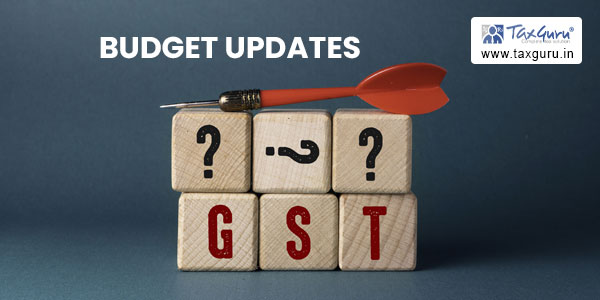Relaxation Of The Penalty under Section 271DA For Violation Of Section 269ST Of The Income Tax Act 1961
The Finance Act 2017 introduced a new section 269ST w.e.f. 01.04.17 as follows –
“no person shall receive an amount of two lakh rupees or more—
(a) in aggregate from a person in a day; or
(b) in respect of a single transaction; or
(c) in respect of transactions relating to one event or occasion from a person,
otherwise than by an account payee cheque or an account payee bank draft or use of electronic clearing system through a bank account.”
Section 271DA was introduced to provide for the levy penalty by joint commissioner for contravention of provisions of section 269ST as follows:
“S. 271DA. (1) If a person receives any sum in contravention of the provisions of section 269ST, he shall be liable to pay, by way of penalty, a sum equal to the amount of such receipt:
Provided that no penalty shall be imposable if such person proves that there were good and sufficient reasons for the contravention.”
Page Contents
Legislative Intention behind introduction of Section 269ST:
1. Press release dt. 05.04.17 clarified the legislative intent behind introduction of s. 269ST in following words:
“Various legislative steps have been taken by the Finance Act, 2017 to curb black money by discouraging cash transaction and by promoting digital economy. These prominently include placing restriction on cash transaction by introduction of new sections 269ST & 271DA to the Income-tax Act………..”
2. Chapter XX-B which contains the sections 269SS/T/ST, is titled as “Requirement as to mode of acceptance, payment or repayment in certain cases to Counteract Evasion of Tax”
Judiciary Background:
1. Supreme Court in the case of Hindustan Steel Ltd V/s State of Orissa reported in 83 ITR 26 held that held that penalty may not be imposed when there is technical or venial breach of the provisions of the Act
2. In the case of Bhagwati Prasad Bajoriya 183 CTR 484, the Hon. Gauhati High Court has held that the penalty under section 271D was not leviable for the reason that transaction of loan finds place in the books of accounts of the assessee.
3. It was held that in the case of CIT Vs Smt. Prahati Baruah (2003) 113 Taxman 74 (Gau)(Mag),that when the identity is known and genuineness of loan transaction was not in doubt, it could be said to be a technical default for which no penalty would be leviable.
Even if there is technical violation of provisions of Section 269SS and Section 269T, as per settled judicial principals, no penalty u/s 271D or 271E is not leviable if,
– The transaction is duly recorded in books of the parties to the transaction
– Identity and confirmation of parties to the transaction is on record
– No black money/tax evasion/malafide intention is involved in the transaction
Thus, if entire transactions of the loans and the acceptance or repayments thereof are shown in the regular books of accounts and assessee was acting in a bonafide belief coupled with genuineness of the transactions, it constitutes a “reasonable cause” within the meaning of section 273 B of the I.T. Act so as to come out of the rigors of penal provisions of section 271D and 272E.
Finance Act 2017 imposes penalty u/s 271DA
Finance Act 2017, instead of amending section 273B, inserted a proviso to section 271DA itself to the effect that, no penalty shall be impossible if such person proves that there were good and sufficient reasons for the contravention of section 269ST. However, what could constitute good and sufficient reasons for contravention have not been defined.
Good and sufficient reasons – Meaning
‘Good cause’ as defined by The Law Lexicon (3rd Edition): “Reason which is found to be adequate or proper and justified by a court or a competent authority dealing with the matter”
‘Sufficient cause’ as defined by The Law Lexicon (3rd Edition): “The expression ‘sufficient cause’ implies no negligence nor inaction nor want of bonafides on the part of the party”
The failure to pay self-assessment tax was due to financial difficulties penalty’ under the above section was held to be unjustified in the following cases –
CIT vs. Mysore Fertiliser Co., (1984) 39 CTR 292: (1985) 22 Taxman 133 : (1984) 145 ITR 91 (Mad);
CIT vs. Indo American Electricals Ltd., (1985) 21 Taxman 433 : (1985) 45 CTR 146 : (1985) 155 ITR 63 (Cal)
CIT vs. Chembara Peak Estates Ltd. (1989) 47 Taxman 166: (1989) 80 CTR 69: (1990) 183 ITR 471 (Ker);
CIT vs. jaipur Electro P. Ltd. (1990) 183 ITR 476 (Raj)
CIT vs. Bhikaji Ramchandra (1990) 183 ITR 478 (Bom).
Consequences of not defining “Good and sufficient reasons”
Since “good and sufficient reasons” are not defined in the Act or Rules, the following are the consequences –
1. It remains at the discretion of the officer to decide whether to impose penalty or not
2. It leads to non-transparency in completing assessments
3. It leads to compilation of unnecessary documents to prove “Good and sufficient reasons” the same.
Trade & Industry is still reeling under the after effects of Demonetization and GST. Such discretionary powers to officers is further killing “Ease of Doing Business”
Hardship faced by Trade & Industry due to the vagaries of 269ST and 271DA & Consequences of the same on the Business in the country
1. The lead Time given to Trade & Industry for implementation of Sec 269 ST was very limited. It is not possible for big industries to amend their software and business processes so fast.
2. Implementing such provisions strictly at one go would have a detrimental effect on the businesses, especially in rural areas.
3. In some Industries especially industries like FMCG, Hospitals & Pharma, Transportation, etc which are catering to the daily and essential needs of common man, implementing such a provision would have a detrimental effect on the social environment in the country.
For Eg. How does a Hospital refuse to treat a patient who pays in cash?
4. Trade & Industry is still reeling under the dual effects of the draconian Demonetization and GST. Such discretionary powers to officers is further killing “Ease of Doing Business” completely.
5. As only the “reported” transactions would be caught, the imposition of penalty and such provision of discretionary powers to officers would further lead to the following –
1. Formation of a parallel cash economy
2. Transaction management by even the organised sector
For Example – Bills may be split up just for reporting purposes, thus leading to non-disclosure totally.
All of the above would completely defeat the purpose of Sec 269ST.
Appeal of Trade & Industry –
1. Keeping in mind the immense hardships faced by Trade & Industry, the penal provisions u/s 271DA for violating the conditions u/s 269ST, should be relaxed for atleast the first year.
2. Keeping in mind the ease of doing business, to remove the discretionary powers of officers which may be misused, the CBDT should come out with a circular specifying that “good and sufficient reasons” u/s 271DA would include –
– Where the transaction is duly recorded in books of the parties to the transaction
– Identity and confirmation of parties to the transaction is on record
– No black money/tax evasion/malafide intention is involved in the transaction






















There is some confusion in Rule Table and the related example given. Please sort it out
Dear sir ,
Your example 2 in month of feb is wrongly done please correct it as soon as possible otherwise it create confusion .
Dear Mr.Vivek Jalan,
Thanks for the wonderful article.
But, I have one query as below:
I have copied the text from your article(relevant part reproduced) as below
II. Rules of GST Set Off from the Month of February 2019 –
in Example 2 (When there is some liability of IGST as well as ITC of IGST) –
CGST 100 150 Rs. 150-100 (CGST ) Rs 50-50 (IGST)
in the last row above, you have claimed ITC of CGST as 1st adjustment, and claimed set-off of unexhausted IGST ITC as 2nd adjustment.
What I feel is IGST ITC has to be 1st adjusted and CGST ITC against CGST outward tax has to be adjusted as a 2nd level adjustment.
Correct me if I m wrong.
Your information will surely help a lot. Thanks for sharing.
example 2 is ncorrect
kindly revisit your last example if it is correct